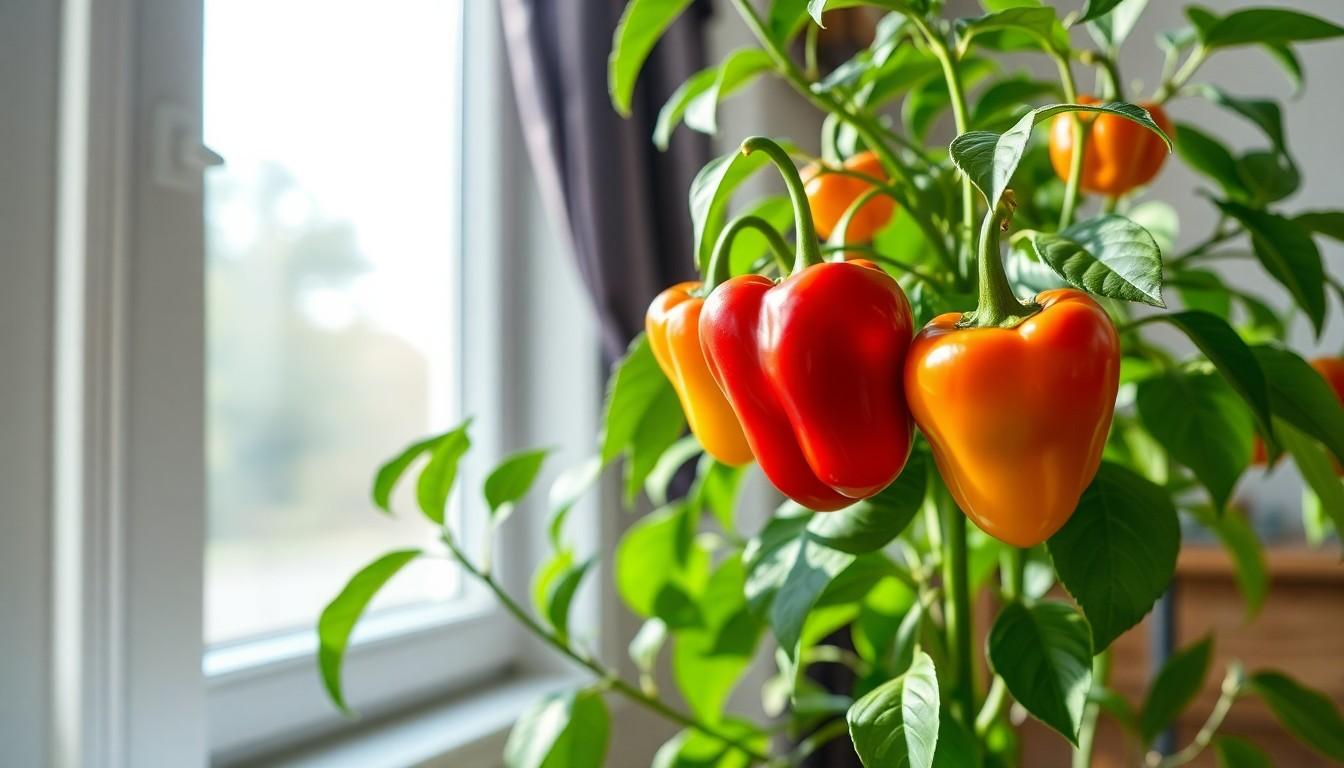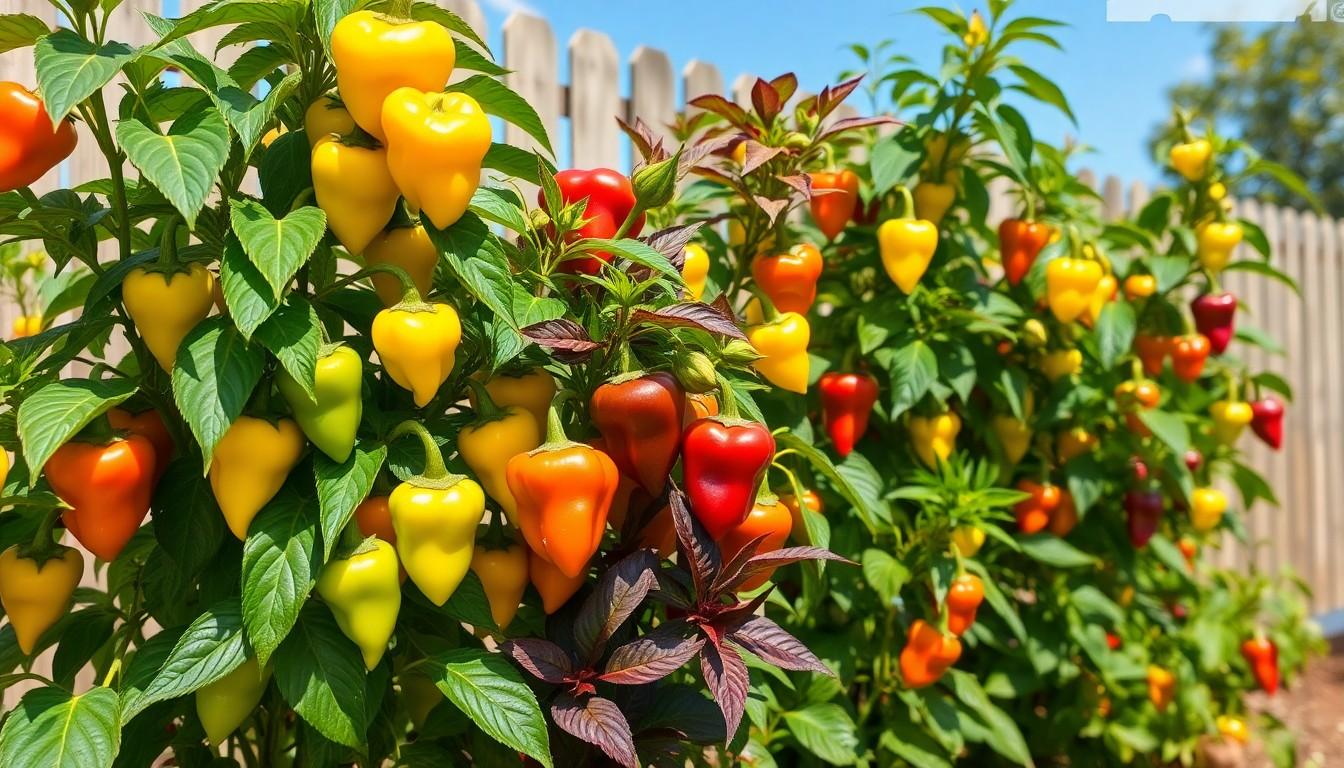Ornamental pepper plants are the life of the garden party, adding a pop of color that even the most seasoned decorator would envy. With their vibrant fruits and lush foliage, these little beauties can turn any dull corner into a fiesta of hues. But don’t let their charming looks fool you—caring for them requires a bit of finesse, and maybe a dash of humor.
Understanding Ornamental Pepper Plants
Ornamental pepper plants, known for their striking colors, add charm to any garden or indoor space. These plants not only serve an aesthetic purpose, but also require attentive care to thrive.
Types of Ornamental Pepper Plants
Numerous varieties of ornamental pepper plants exist. ‘NuMex Twilight’ showcases vibrant multi-colored fruits, shifting from purple to yellow and red as they mature. ‘Jigsaw’ presents a unique mix of colors and shapes, featuring variegated leaves with a colorful display of small peppers. ‘Decoratum’, characterized by its compact size, offers a hardy option for containers or window boxes.
Unique Features of Ornamental Peppers
Unique attributes define ornamental peppers. Colorful fruits and leaves create an eye-catching visual impact, elevating garden appeal. These plants also exhibit a variety of shapes, providing interesting textures in landscaping. Some varieties produce edible fruit; however, they maintain a decorative purpose rather than culinary use. Small stature aids in versatility, allowing placement in various garden settings.
Essential Care Tips for Ornamental Pepper Plants

Ornamental pepper plants require targeted care to thrive and display their vibrant hues. Following essential care tips helps maintain their health and visual appeal.
Optimal Light Requirements
Bright, indirect sunlight suits ornamental pepper plants best. When placed in locations that receive at least six hours of light daily, these plants flourish. Direct sunlight can scorch their leaves, especially in intense conditions. Consider utilizing south or west-facing windows for indoor plants, while outdoor plants appreciate filtered light. Adjusting the position based on seasonal changes optimizes their exposure, ensuring the plants produce abundant fruit.
Watering Guidelines
Consistent watering is crucial for ornamental pepper plants. Soil should remain slightly moist but never soggy, as overwatering can lead to root rot. Checking the top inch of soil aids in determining moisture levels; if it feels dry, it’s time to water. During growing seasons, typically spring and summer, these plants may require more frequent watering. Decrease watering as fall approaches, allowing the soil to dry slightly between waterings. Proper drainage also supports healthy roots and balances moisture levels.
Soil and Fertilization for Ornamental Peppers
Proper soil and fertilization play crucial roles in the health of ornamental pepper plants. Selecting the right type of soil ensures optimal growth and vibrant colors.
Best Soil Types
A well-draining potting mix is essential for ornamental peppers. Choosing a soil that retains moisture yet allows excess water to escape prevents root rot. Mixes containing peat moss, perlite, and vermiculite work well. These components foster aeration and support healthy root development. Containers with drainage holes also enhance soil performance, allowing roots to breathe.
Fertilizing Schedule
Using a balanced fertilizer promotes robust growth in ornamental peppers. Applying a diluted water-soluble fertilizer every four to six weeks encourages vibrant foliage and fruit color. During the growing season, emphasizing nitrogen supports leaf development, while phosphorus enhances flowering and fruiting. In fall, reduce fertilization frequency as the plants enter dormancy. Regular fertilization aligns with the plant’s growth cycle and contributes to overall health and aesthetics.
Common Pests and Diseases
Ornamental pepper plants can face challenges from pests and diseases, affecting their health and appearance. Prompt identification and treatment can preserve their vibrant qualities.
Identifying Pests
Common pests that affect ornamental pepper plants include aphids, spider mites, and whiteflies. Aphids appear as small, soft-bodied insects on the undersides of leaves. Spider mites create fine webs on foliage, often accompanied by speckled leaf damage. Whiteflies cause similar damage, manifesting as tiny, flying pests beneath leaves. Regularly inspecting plants helps catch infestations early. Look for discolored leaves and stunted growth, which are indicators of pest issues. Eliminating these pests requires immediate action.
Disease Prevention and Treatment
Ornamental pepper plants are susceptible to diseases such as powdery mildew and root rot. To combat these issues, maintaining good air circulation around plants is crucial. Avoid overhead watering to reduce humidity, as this encourages mildew growth. Treat powdery mildew with a fungicidal spray or a homemade solution of water and baking soda. Root rot stems from overwatering and inadequate drainage. Ensuring pots have drainage holes facilitates moisture control. If root rot is suspected, inspect roots regularly and remove any that appear dark or mushy.
Conclusion
Ornamental pepper plants bring a burst of color and charm to any space. With proper care and attention to their specific needs, these vibrant plants can thrive and enhance garden aesthetics. By ensuring adequate sunlight, moisture, and a suitable potting mix, they can maintain their striking appearance throughout the growing seasons. Regular monitoring for pests and diseases is essential for preserving their health and vibrancy. With a little effort and the right approach, ornamental pepper plants can be a stunning addition to any garden or indoor setting. Embrace the beauty and joy these plants bring, and enjoy the visual impact they create.

